Electric Tour's journey is coming to an end. The ambitious project of the Electric Tour, to make the longest journey with an electric car and to enter the record book, marks its end on Monday, April 22, in Unirii Square in Timișoara.
The event is organized under the umbrella of Restart Energy, a company that is faithful to the idea of protecting the planet using energy from green and renewable sources.
Electric Tour started with an eco-friendly enthusiasm in the fall of 2018, when a team of ambitious people wanted to show the importance of electric cars and electric charging stations in Romania, making a journey through all corners of our country.
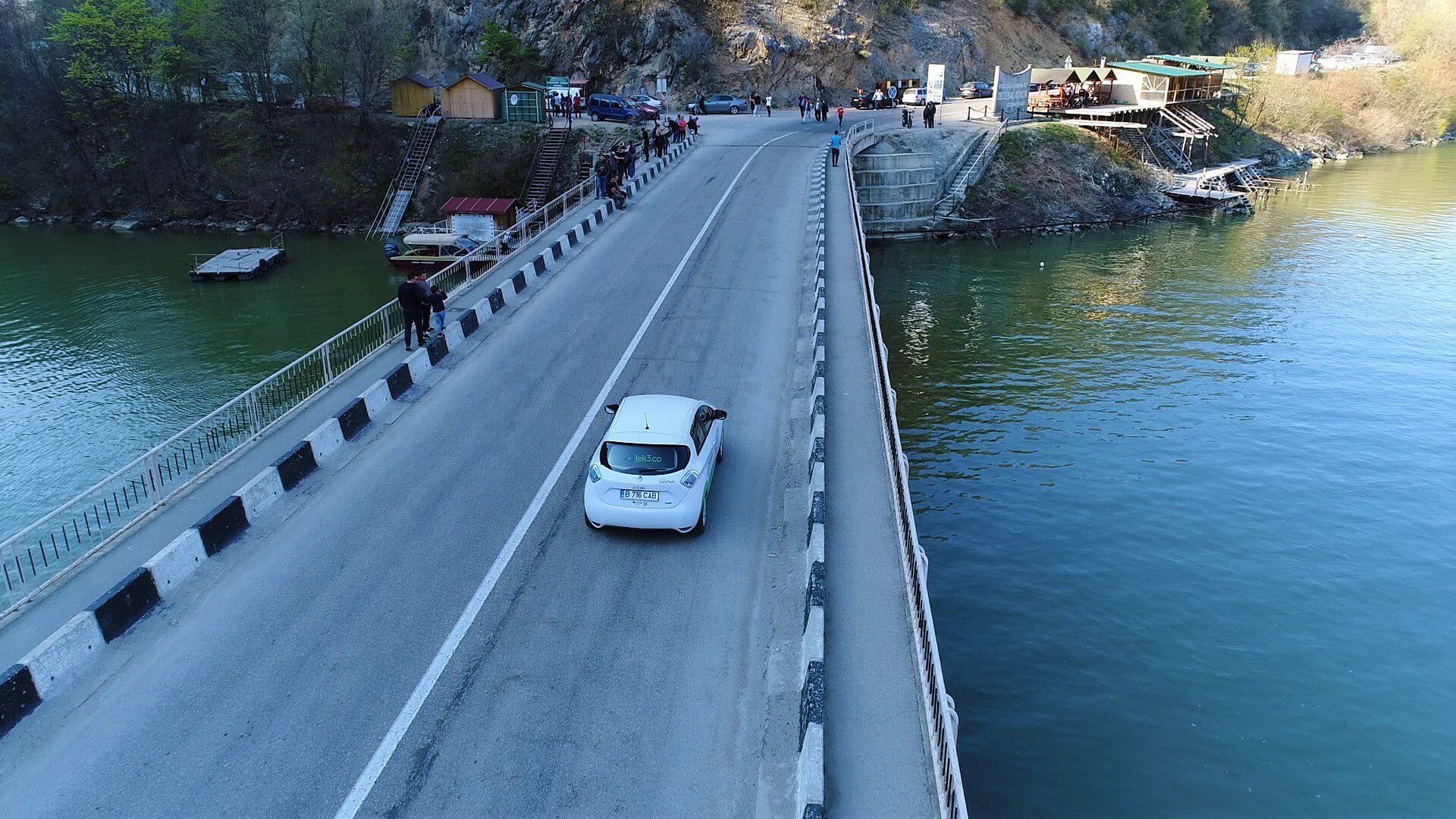
Orşova
Christian Gernermann, a German who settled in Romania, wanted to discover the experience of knowing our country behind the wheel of an electric car and joined this project as a driver of the electric tour. Thus, together with Christian, a Renault Zoe, and a team organized in the back, the Electric Tour adventure began.
Although lektri.co and SafeFleet later joined the project, the perseverance with which Christian covered all the undiscovered corners of our country can be seen through GPS monitoring provided by SafeFleet:
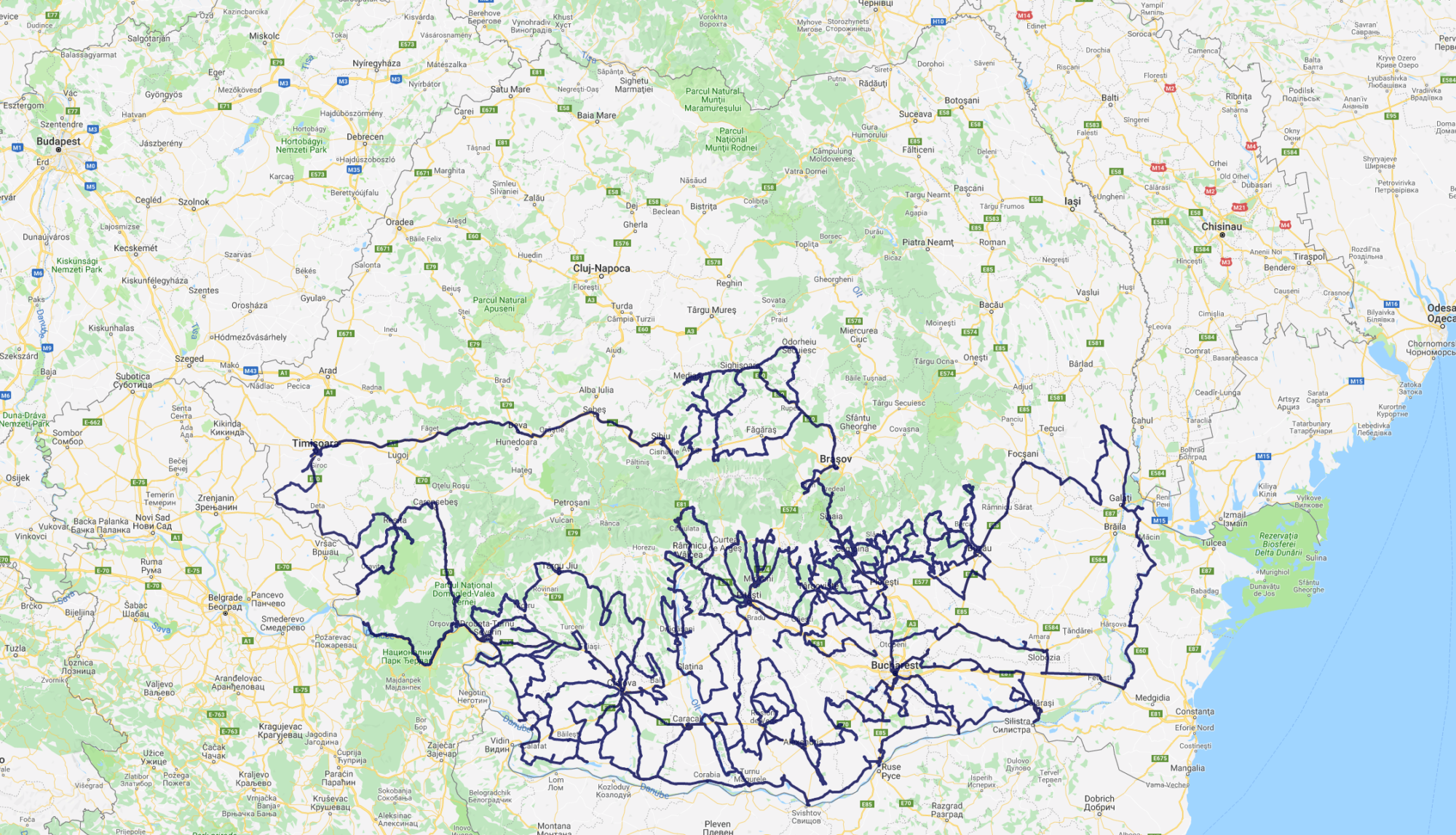
Lektri.co wanted to support the electric tour by offering a portable charging station, with which Christian could charge at single and three-phase sockets - up to 7.4 kW and 22kW, respectively - making the time allotted for setting stops more efficient but also providing more options for places to load (restaurants, town halls, boarding houses, hotels, etc.).
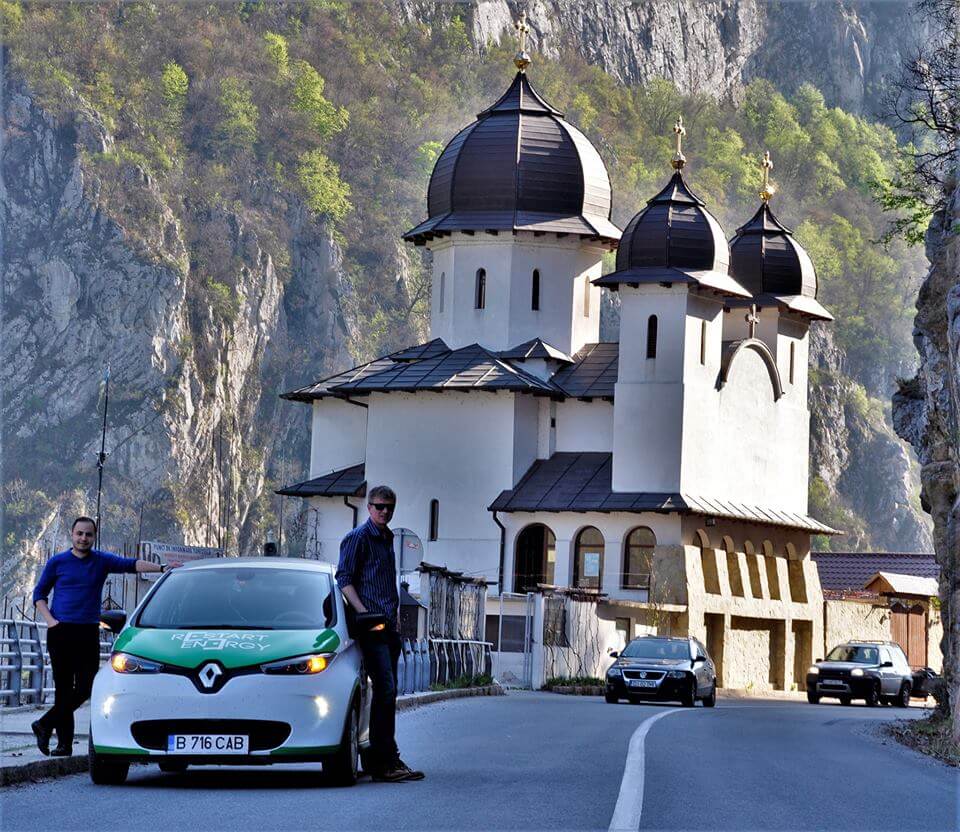
We are glad to have contributed at least a small part to the success of the Electric Tour and to mark the end of this challenging journey on Monday, right in the city from which it started.
Christian Gernermann, the driver-hero of a twisted journey through Romania, Oran Mărculescu, the founder of ecoprofit.ro, and Armand Domuța, CEO of Restart Energy, will speak at this successful finish.
Visitors to the event can find out from Christian Gernermann what the ups and downs he went through were, what obstacles he encountered, and how vital the hospitality of the people on such an extensive trip is.
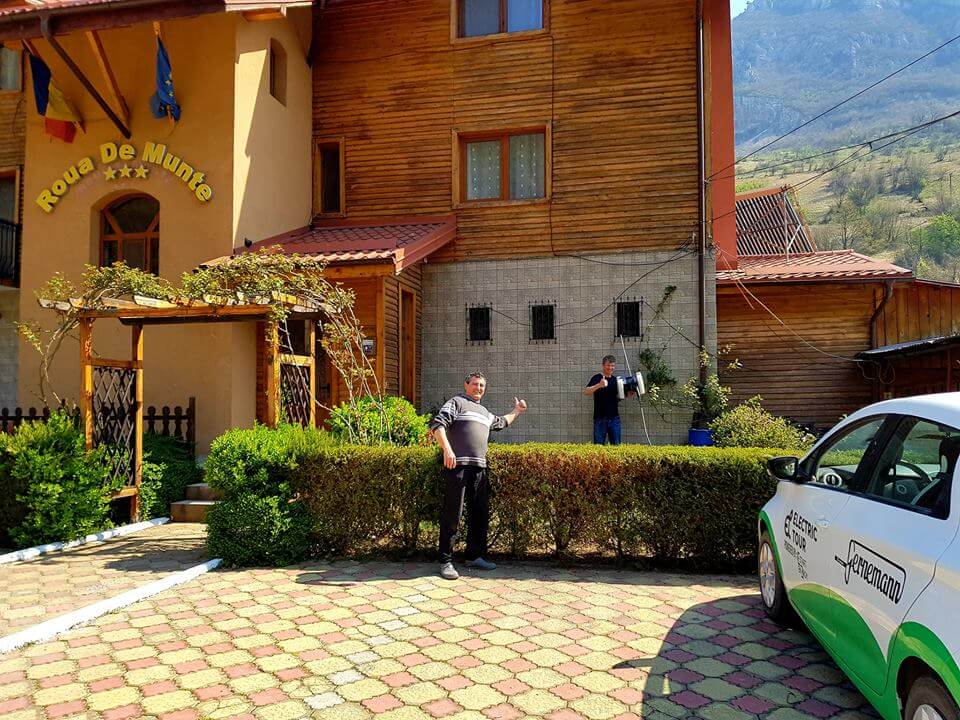
At this event, Restart Energy donates to the people of Timisoara a solar tree, a charging station for solar-based gadgets, which will be placed in the city's central area.
For those interested in renewable energy, alternatives to current mobility, and why not, what the solar tree will look like, we are waiting for you in large numbers at the event on Monday from 19.00.
For the people of Slănic Moldova, the question is not just an individual one but a community one.

Following the torrential rains of June 2018, 326 houses in Slănic Moldova were flooded. A gas pipeline broke, leaving 700 people without power, and the electricity network Târgul Ocna - Slănic Moldova was severely damaged, leaving 1400 people without electricity (source: libertatea.ro, stiri.tvr.ro).
In addition, the landslides affected the national road 12B; at some points, there were cracks, fissures, and settlements on the road platform, which made it very difficult for traffic to Slănic Moldova resort (source: ciresoaia.ro).
The problem of landslides is not foreign to the area's inhabitants, this being more and more common due to illegal deforestation. This is why the NGO Together for the Future from Bacău County has decided to organize a tree planting action, bringing to public attention that indifference to this issue affects hundreds of people in the area now and in future generations.
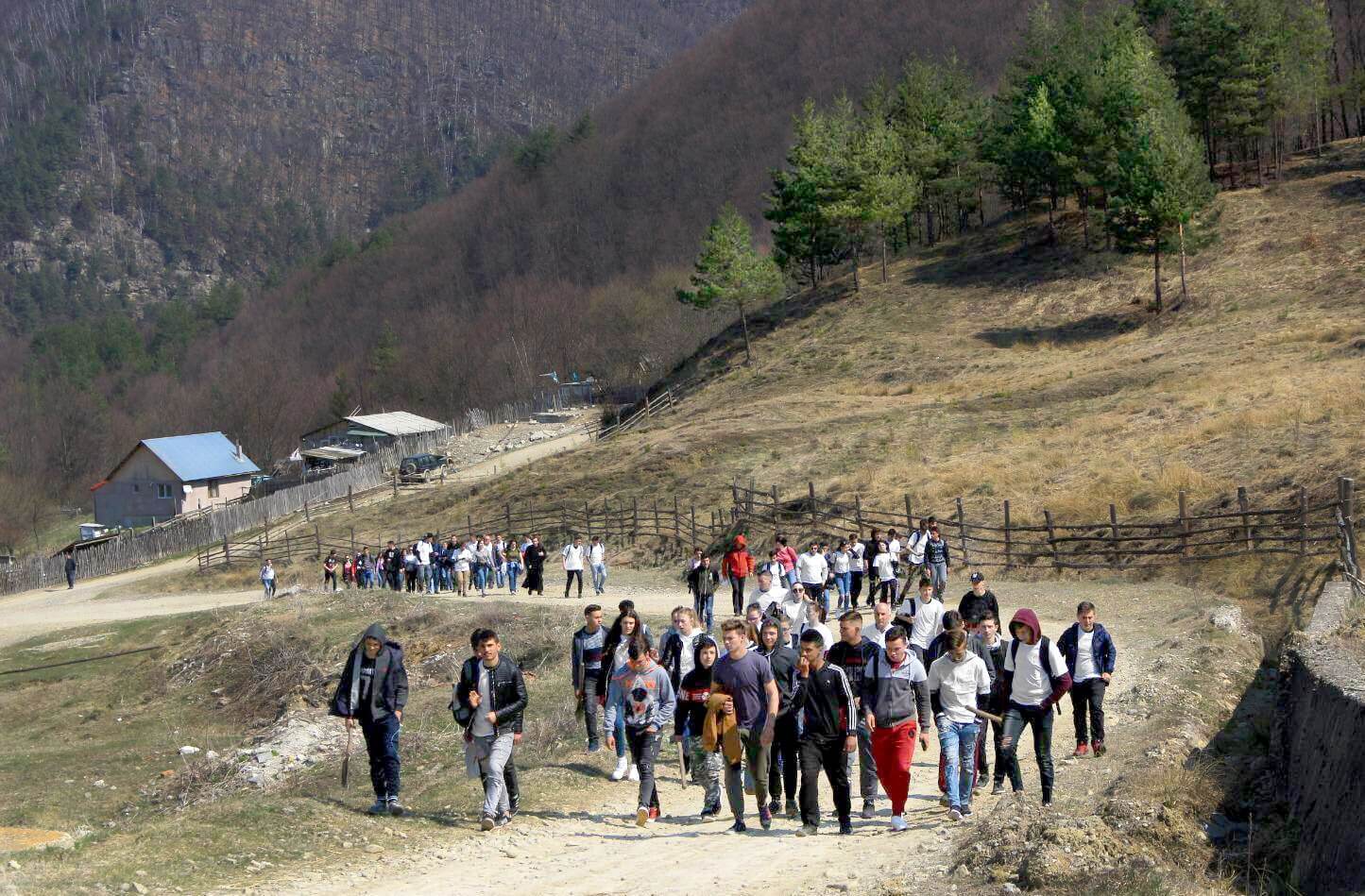
With the slogan Get Involved - Indifference is not a solution, Together for the Future opens a discussion about citizenship and involvement together, as a community, to take care of other people and the environment in which they live. At the same time, it is calling on local authorities to take public action to prevent these natural disasters.
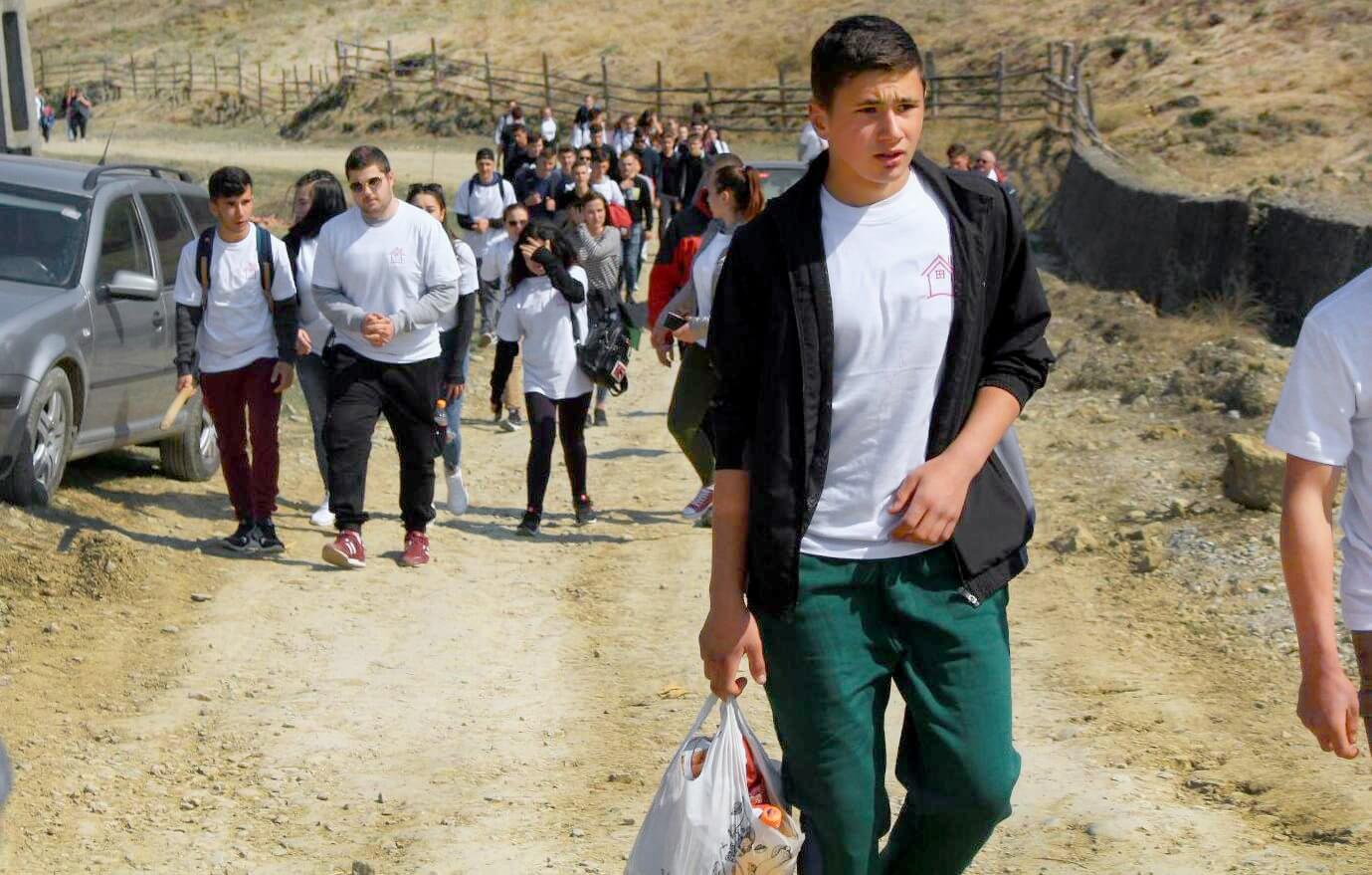
Following the opening of this public discussion, the tree planting action brought together over 200 students and teachers from the "Scarlat Longhin" Dofteana Gymnasium School, the "Costache Negri" National College in Târgu Ocna, and the Târgu Ocna Technological High School.
Forest District Târgul Ocna provided 1000 fir seedlings and the planting instructions, and the over 200 volunteers got involved, with spades and a lot of growth, in planting the trees.
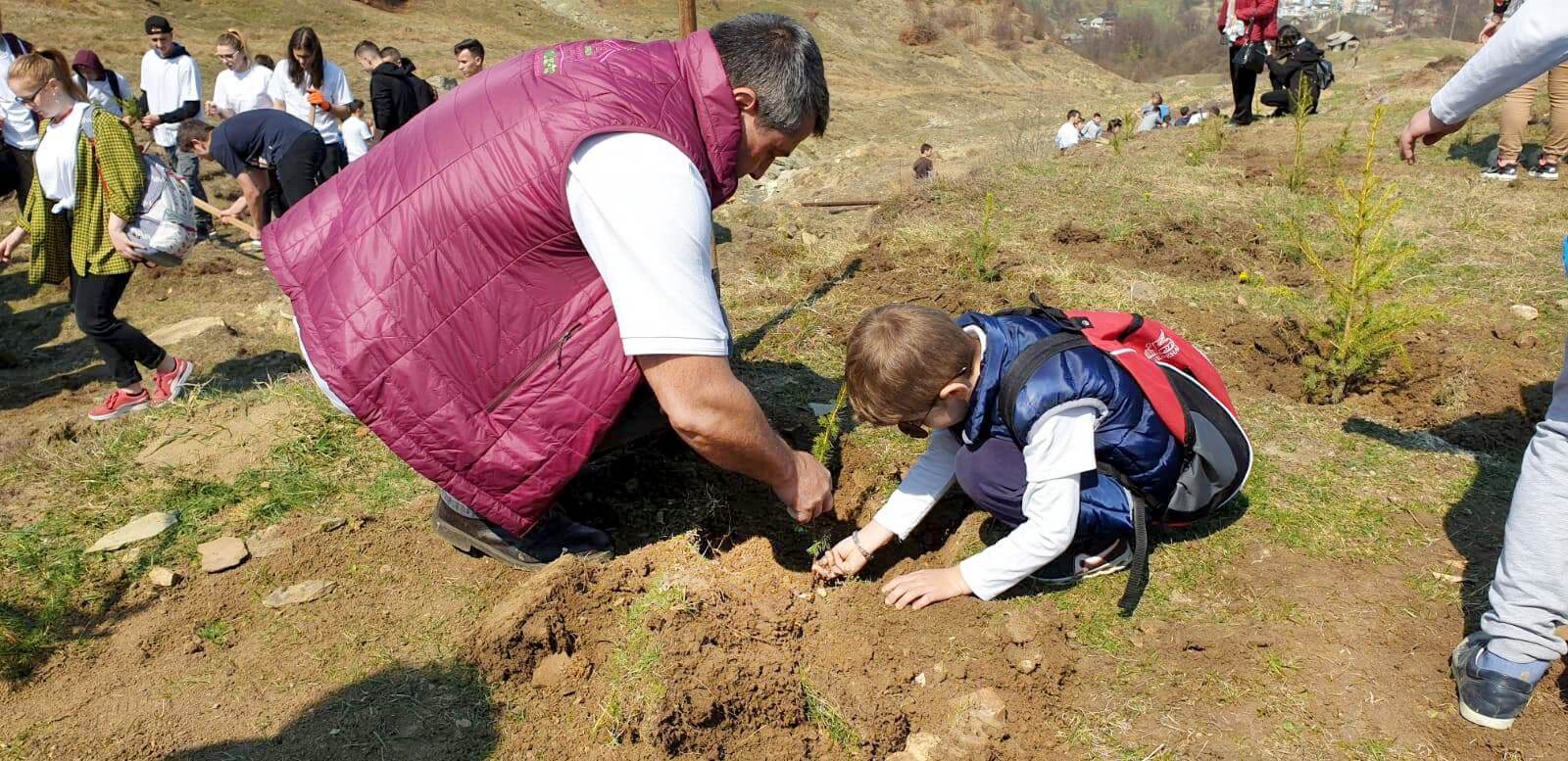
As witnesses and supporters of the event, we enjoy the joint effort of the people in the area to have cleaner air, a safer and more protected environment, and especially the care of the residents affected by frequent and systematic deforestation.
We can only support these local initiatives and rejoice that people are trying to bring about change where it is most needed. Only with them can we build a cleaner, safer, more sustainable future.

Before you set off with an electric car, maybe even before you buy it, it's good to know what charging alternatives are.
The nightmare of any electric car driver is to stay in an isolated place, without electricity, without a battery.
That's why you can never be too cautious about your plans.
The ideal plan is to charge at a public charger and have them at every step. Especially when you travel, the usual charging at home or work no longer exists, and you have to find other alternatives.
Careful route planning
When you want to drive 24,000 miles with an electric car, as Restart Energy and Christian Gernermann want on the Electric Tour, you need to pay close attention to the route you take, where you stop the charge, and how much time you spend. In every place.
To break the world record of kilometers made by an electric car, they planned to cover the whole country, going to the most isolated villages in Romania.
Although a difficult task at first, planning stops has become commonplace - something that can be confirmed by any driver who has made several long journeys with the electric car.
But sometimes, it's not just up to you whether your charging station is free or functional. Maintenance and repair of charging stations can take several days, during which time it is not always marked on the plug share map that the station is not working.
Right now, you're thinking about Plan B.
Each electric car has a native charger for situations where the driver has no choice but to charge at 230V on a single-phase socket.
Any solution, in this case, is welcome, but there are also disadvantages.
The car is charging at a single-phase socket, which means it will set much slower, and these portable chargers manage to capture about 2kWh. But if you have a night to spend there, you may have charged enough to get to a faster charging station by morning.
Can't find charging stations? Take one with you.
While single-phase charging can take 8-9 hours, three-phase charging with a portable charger saves you from long breaks and the desperate search for other stations.
There are portable charging stations that charge up to 22kW, at 32 amps, like a type 2 charging station.
Time saved
While the BMW i3 charges in 8-9 hours with the native charger, it sets in three hours with the portable type 2. Renault ZOE charges in two hours.
Various loading destinations
Various locations have three-phase outlets because they operate with more complex kitchens or power systems that require a lot of power.
Three-phase sockets are usually found at:
Most are locations where you stop anyway for 1-2 hours minimum.
Your autonomy and that of the car
With a quality portable charger, you can rely on its operation in various conditions:
Global statistics suggest that the market for BEVs and hybrid electric vehicles is expanding, with sales up over 50% yearly. State laws that encourage the purchase or use of electric cars over gasoline-powered cars also contribute to the growth rate.
According to data gathered, over 1.3 million electric cars have been sold in Europe over eight years (source: Wikipedia). According to the Romanian Auto Registry, Romania is still a young market for electric vehicles, with only 1112 electric automobiles.
Romania, like Europe, is increasing at a rapid pace but on a much smaller scale: the number of registered electric vehicles tripled in 2018 compared to 2017.
However, this does not yet appear on the map of electric charging stations. There are around 290 loading locations in Romania.
We ran a study of these places in December 2018 by cities and station type: type 2, CCS / SAE CHAdeMO, and 3Ph, and came up with some intriguing results.
The cities with the most loading locations are Bucharest, Timisoara, Iasi, and Cluj-Napoca.
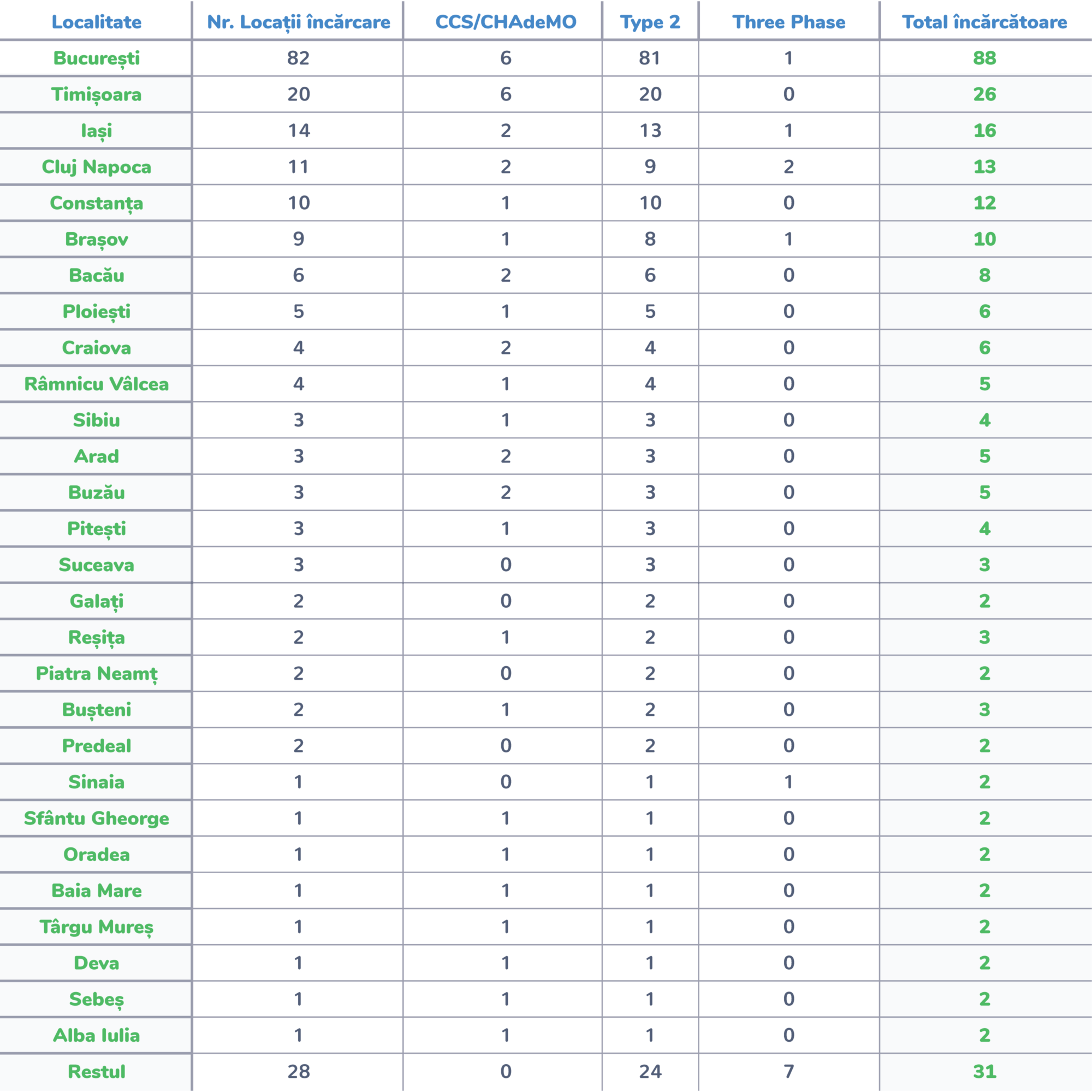
If the national trend of purchasing electric cars is maintained, charging will soon be a difficult task. The stations will be overcrowded with drivers, or the only stations in certain cities will be the last hope of long-distance electric passengers. Often, charging stations do not receive constant maintenance, and their failure can mean days of non-operation, which is terrible news for electric car drivers.
There are two possible solutions to these troublesome situations.
Drivers need a backup plan in these situations. This is always to carry a portable electric charger such as the MIA in the trunk, which can be plugged into a three-phase socket.
Three-phase sockets are usually found at town halls, boarding houses, and restaurants, but other locations can offer three-phase sockets.
In the electric rally made by SafeFleet in Păltiniș, a charging stop was made at the Sebeș town hall, which allowed the charging of 10 electric cars at their socket. Of course, only with portable MIA-type chargers.
Companies are beginning to realize how important a destination becomes to an electric car owner and their general route: where they stop to eat, where they stop to sleep. It all depends on the availability of charging at that location.
If an electric car driver wants to travel, he will choose hotels that allow him to charge quickly. Stops will be calculated based on loads and stations.
It is a premium advantage for these destination-type locations to have destination stations as well - they benefit from a select clientele. They can introduce friendly tariffs to cover their electricity consumption over time.
The Romanian market is still young, but that does not mean that drivers do not have solutions to prepare for long journeys.
And companies could be preparing for their electric clients because they will stop at some point at a location that will help them. Why not be their location?
What do you think? Do you vote for the driver or company option?
Although the winter is slowly coming out, there is still enough time to spend in the mountains for ski enthusiasts and mountain lovers.
But getting there can be challenging, especially at low temperatures. But there are some details that you can make these roads easy and convenient if you pay attention to.
Lithium-ion batteries need a constant temperature to be used in ideal conditions. This is because, at extreme temperatures, performance decreases: shorter battery life, longer charging time, and higher power consumption.
Before implementing any of these measures, it is good to know that the optimum battery temperature is 25 ° C.
And to be able to load quickly in winter, it is necessary that:
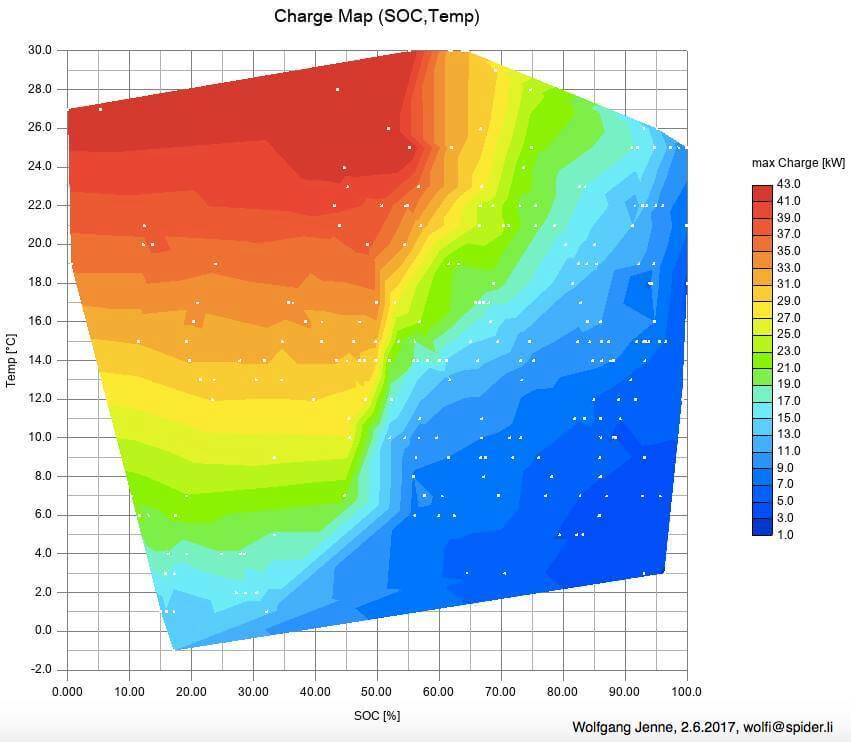
How can these conditions be obtained when it is -10 ° C outside? From the graph above, you can see that the car does not load if it is freezing.
To make fast charging in optimal conditions, here's what you need to do:
Acceleration consumes battery power, and deceleration charges it. This continuous flow brings the battery close to the optimum temperature. In addition, fast charging also increases the battery temperature.
Another advantage of this method is that you prevent battery wear due to the low temperature.
If you are an owner of an electric car that takes into account battery wear through repeated fast charging, then you can charge a fast charger just to increase the battery temperature, then you can drive a slow charger.
Try to charge at the highest possible battery temperatures in winter. If you have just arrived at your destination after a long journey, set it immediately and not the following day when the battery is already cooled.
Another option present in all ZOE and Kangoo Z.E models is the pre-conditioning system.
The idea is simple: you can program the temperature while charging the car. The result is that the car thaws, the inside is heated, and the battery is protected.
This can also be done on departure: drivers can pre-program the heating so that the car is at the right temperature when getting behind the wheel. Heating the car without starting the engine is a convenience that petrol/diesel cars can never have.
We recommend inflating the tires with nitrogen for long mountain trips, not oxygen. This has several advantages and the pressure remains stable longer due to the way nitrogen circulates compared to oxygen, and there is less water vapor in the tires.
Those in the car racing industry have realized that if the tires get hot, there are more minor pressure variations when filled with nitrogen than with the tires filled with oxygen.
In addition, if the pressure is higher by 15-25%, it significantly increases the car's autonomy, even if it increases the braking distance.
These are our tips, which we tested this winter with Renault ZOE on the road to Păltiniș. Did I miss something? Tell us in the comments.
If two years ago, we participated in the Vienna Biennale with what has become, in the meantime, the most popular charger LEKTRI.CO - JOY 22kW - this year, a new charging station is in our record.
The new LEKTRI.CO 7.4kW station was launched during the Bucharest Motor Show & Accessories 2021 event, organized at Romexpo on October 7-17.
The 7.4kW power station has a friendly interface and can be easily installed at home, at the company's headquarters, and in public spaces, such as long-term parking lots. Produced in Romania, the station has an affordable price and various functions designed to facilitate the loading process.
The station can be easily connected to WiFi via the dedicated application. The customer has access to many functions, including turning on / off remote charging, setting the charging current, programming at certain time intervals, and setting the brightness of the LEDs.
Among the technical functionalities offered by the LEKTRI.CO 7.4kW station, there is also the dynamic regulation of the charging power according to the other consumers in the electrical network. The charger can be installed in any location, regardless of the available ability. Also, in the case of photovoltaic installations, the charger can adapt the charging current according to the production of photovoltaic panels, thus maximizing the green energy used.
LEKTRIfy platform - the perfect ally in monetizing electric charges
LEKTRIfy is the first platform in Romania for monetizing electric car chargers and currently has over 300 charging points in Europe. The platform is addressed to any company or individual who wants to make its chargers accessible to the general public. By integrating into the platform, the charging station owner can see the charging users, the delivered energy, check the charging sessions and analyze the charging history. The LEKTRI.CO 7.4kW charger model has the communication protocol necessary for integration into the LEKTRIfy platform and thus facilitates the monetization of electric charges.
"The charger is part of the home automation system."
During the launch event on October 8, 2021, Claudiu Suma, CEO of LEKTRI.CO, spoke to reporters about the newest station for electric cars.
"Today, we are launching a very affordable charger that can" match "very well with Dacia Spring. It is a charger that can be used at home or work, in parking lots, or hotels. It is designed entirely by us, and it is made in Romania. It has a brilliant application. The charger is part of the home automation system, in the sense that you can come home with the electric car, you connect it to the charger and until the next day, the car will be charged with the cheapest current, and that is important considering the current increase in electricity prices. If you generate green energy with photovoltaic panels, it will charge the next day if the sun shines. We have tried to make a charger with a minimalist, contemporary design, accessible in terms of cost, and have a lot of software functions". Claudiu Suma, CEO of LEKTRI.CO, in the interview given to AGERPRES.
Next steps…
The LEKTRI.CO 7.4kW station is the third model of charger that we bring to the attention of distributors, the business environment and the owners of electric cars. We invite you to discover more details about the new 7.4kW charger model, talking to a LEKTRI.CO representative.